HOTEL PALENQUE AGAIN
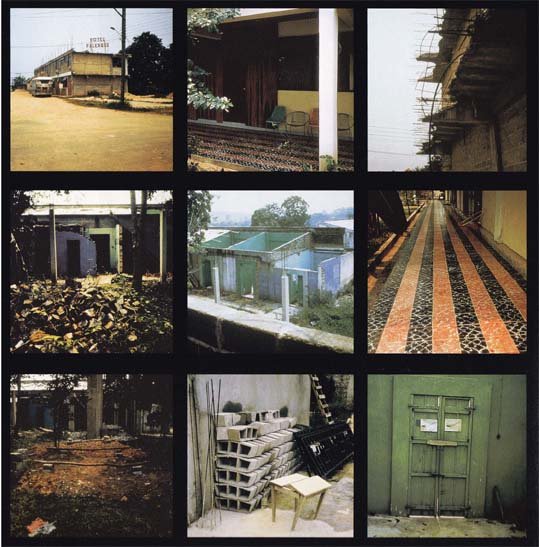
Hotel Palenque 1969 by Robert Smithson
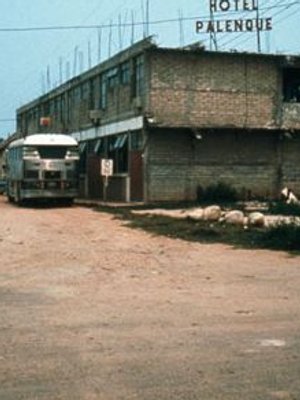
Robert Smithsons iconic slide-series dealt with the architectural curiosity of Hotel Palenque, that he described as a "never ending ruin". While the building process is still running on one side, the building is already decaying on the other side - until the whole process of renewal and rebuilding starts over again. Smithson saw it as a contemporary example for the mayan perception of material and time.
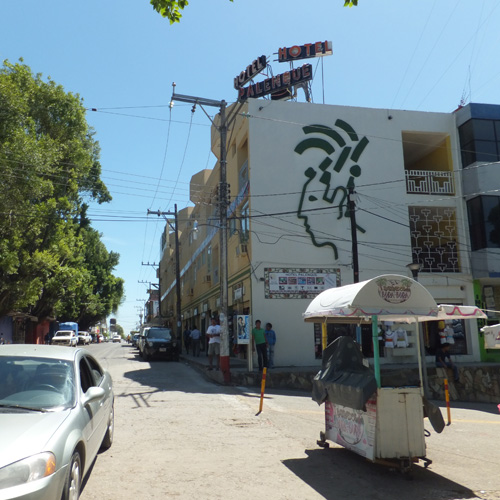
When I came across Hotel Palenque 43 Years after Smithson, the Hotels sign was just being painted over.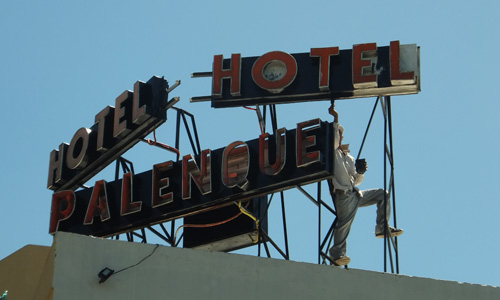
https://www.youtube.com/watch?v=hli3m7EIEus&feature=youtu.be
Invited to lecture at Rainer Ganahls Strange Teaching Seminar in Leipzig I did the lecture
haunted by Smithson 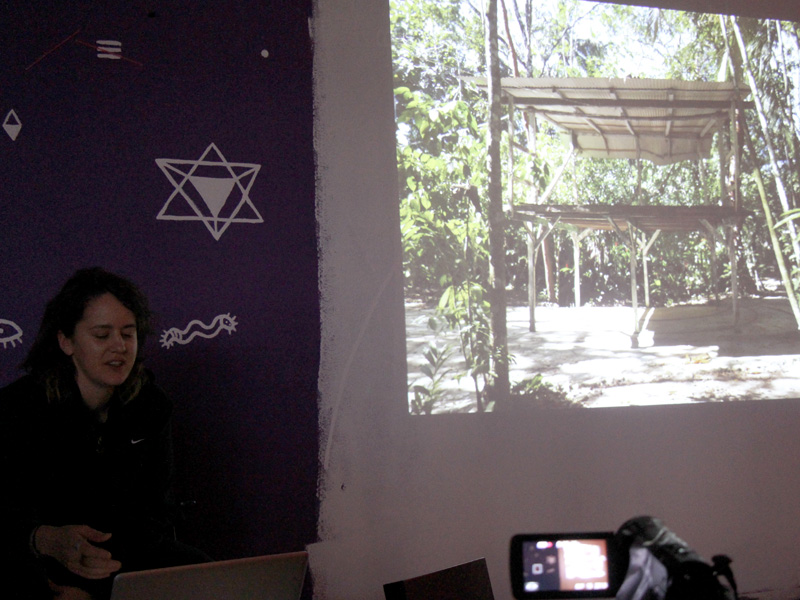
Learning from Palenque
A slideshow by Ulrike Buck
Palenque, Yucatan 2012 / Leipzig 2014
I like gardening. To me that means to cultivate a little surrogate for our lost paradise in the reality of civilisation. And this is also what we are sort of doing here in this abandoned 19th century pre-GDR shopping center named HERO where Rainer Ganahl is the host of our convention of neo new age bandits.
These days people are talking a lot about sustainability. The term is being applied to all kind of things, product, organisms, ideas, whatsoever. Now, we are here right now, creating a new perspective, because something else was not sustainable, and its ruins give space to us. It probably makes way more sense to replace the concept of sustainability with biodegradability. When you past the peak of a certain existence, give space for the new! Nature thinks in circles. The calender of the Mayas was round, and it made a revolution (double meaning!) every 52 years. That was approximately a human lifetime. Every 52 years they destroyed and burned their housed and material belongings (not the temples) and made everything new. I think that is a great concept. After I resigned from the travel agency called Ganahl class, I went on a post graduate vagabonds programe to deepen my comparative studies of material and time. Mexico proofed to be a great ground for those kinds of studies. Its rich variety of ancient cultures continues to be present in the thickest urban jungle like Mexico City, as well as in more or less remote places where nature has not yet lost its force, the one than seems brutal and obscene to us.
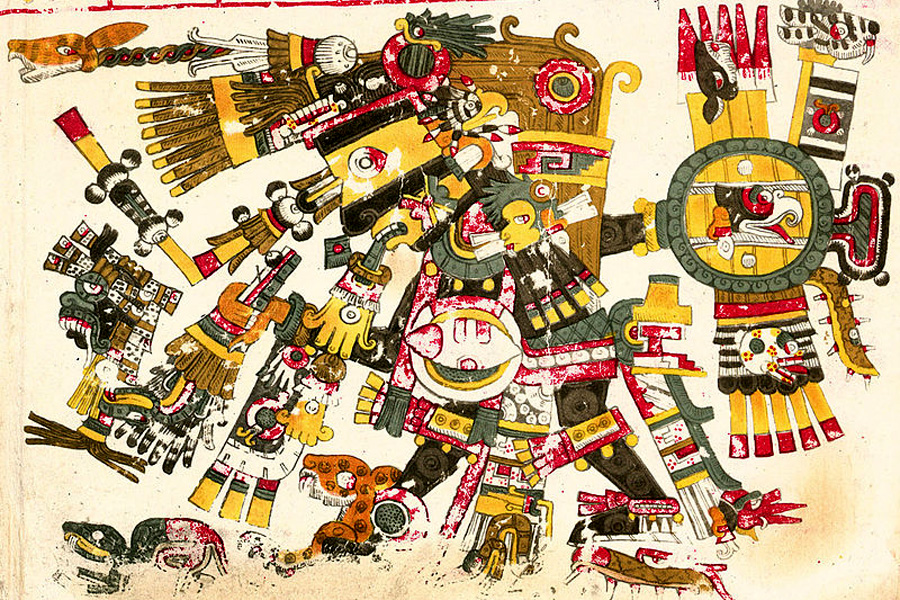
I rented a studio and stayed for a year. Today I want to show you a series of photos, that I made in the jungle of Palenque. Palenque is the site of one of the most famous maya temples, but I am not going to show you that archeologigal site. I am going ot show you the place where I stayed.
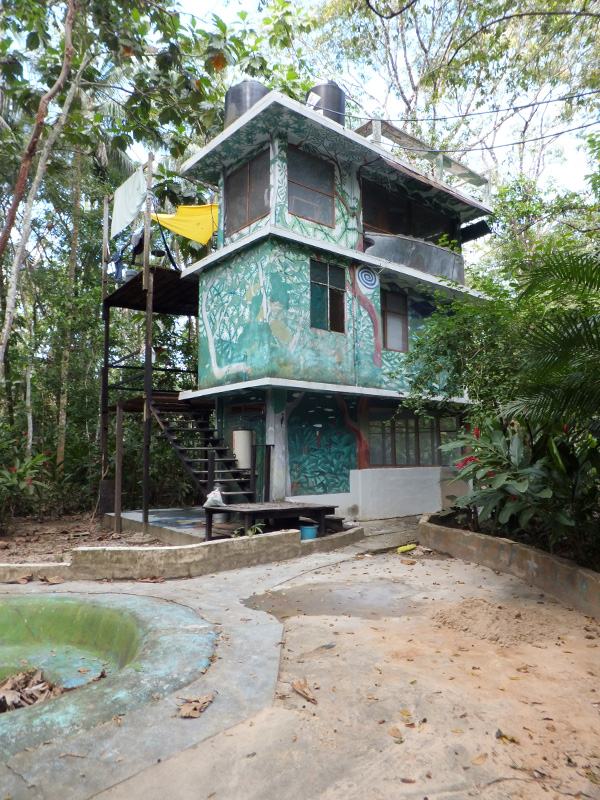
I had rented a simple cabaña that was standing in an extensive lush jungle garden that used to be a ranch in former times. The surroundings here kept fascinating me more than the famous ancient temple ruins nearby.
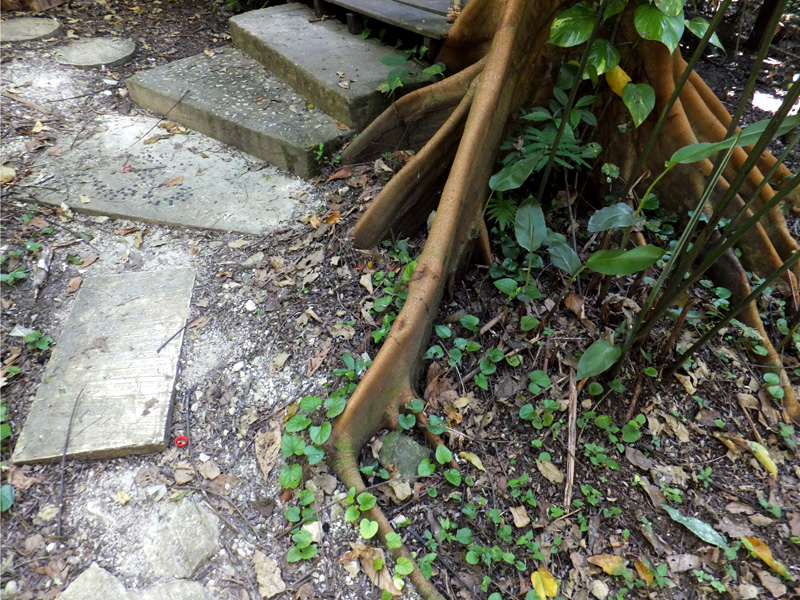
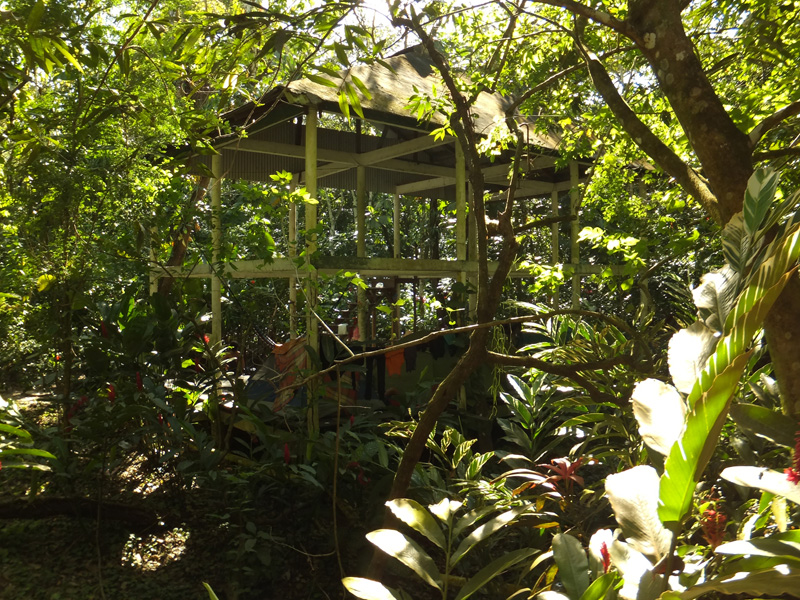
Everything was bursting from vital energy: A dance of immense plants with excentric shapes and colors and a incredible concentration of animals that made sounds of all kinds, day and night. The most impressive roaring shouts mad one look up into the trees, simply to see the balls of a howling monkey.

Small more or less walkable paths meander through the thicket of the forest, giving way to weird and fantastic buildings in all kind of conditions. Some are empty, some are being rented out to travellers. Some accomodate permanent residents who are mostly archeologists working on the nearby archeological site. Some are in the midst of construction (since when?) while already being embraced and digested by the jungle.
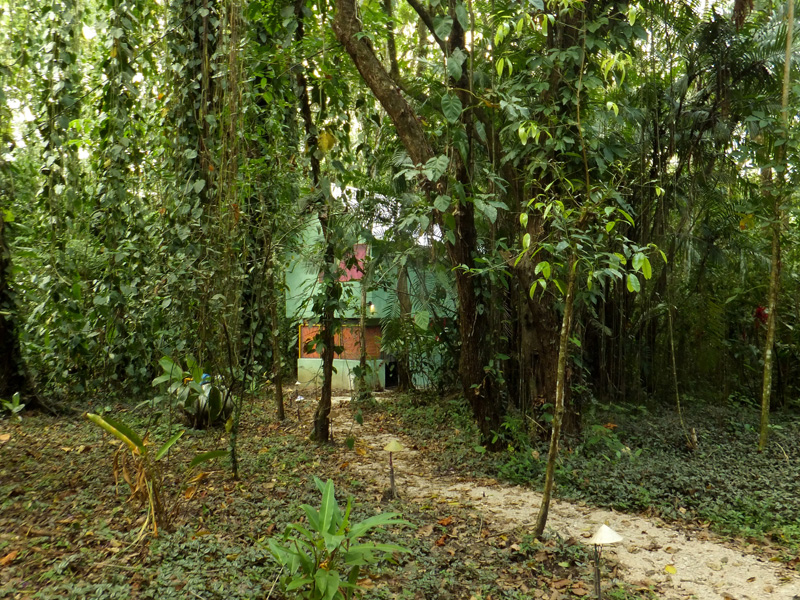
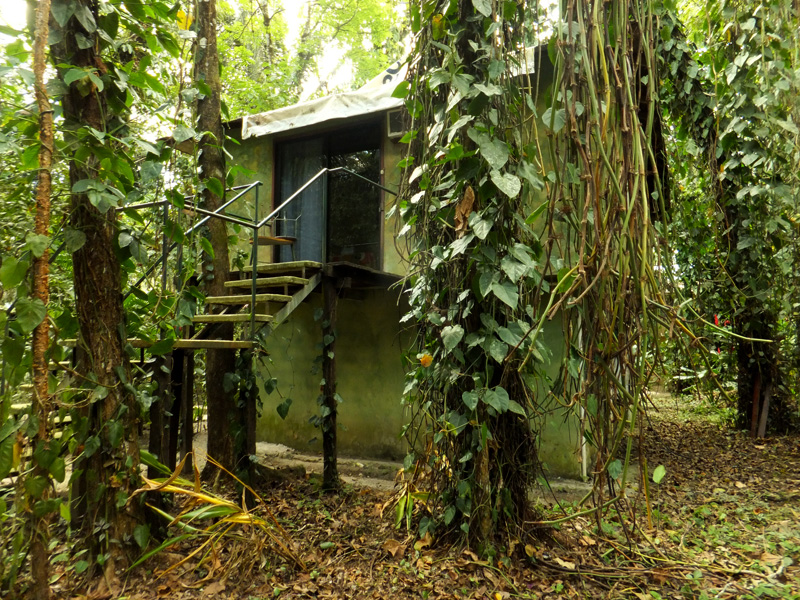
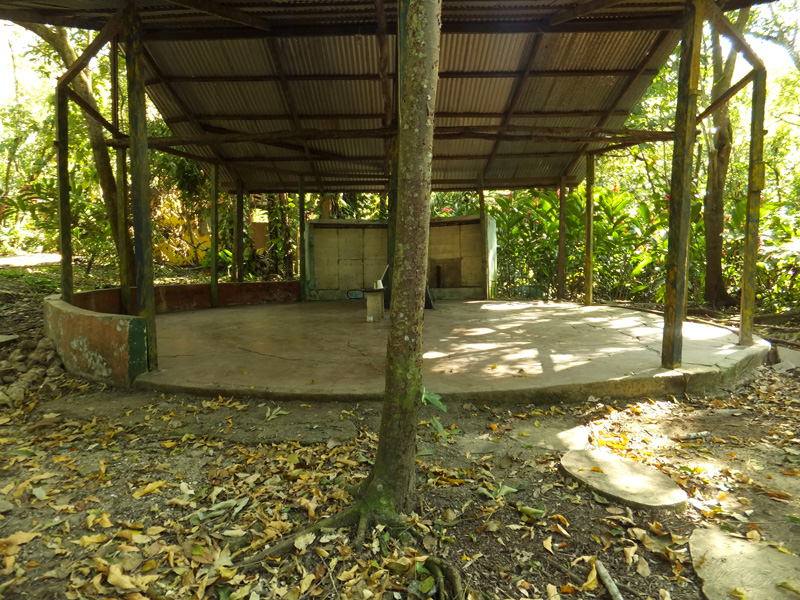
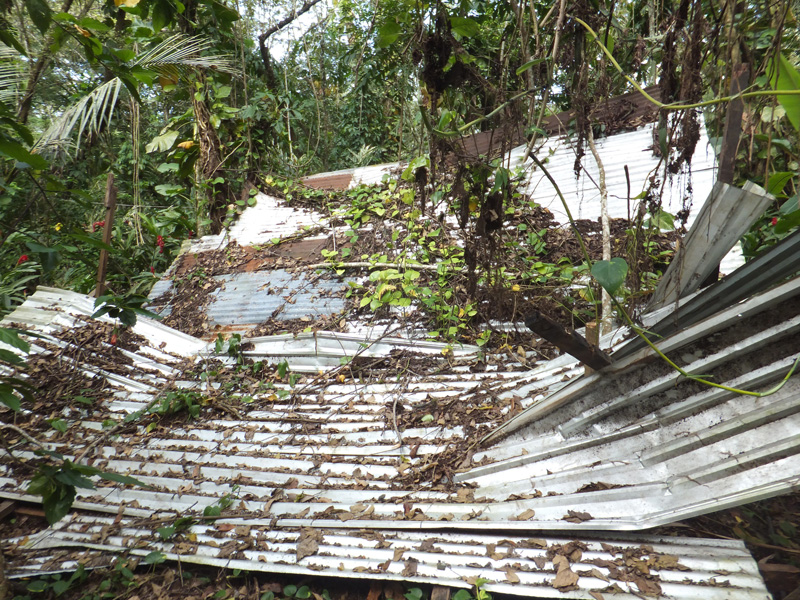
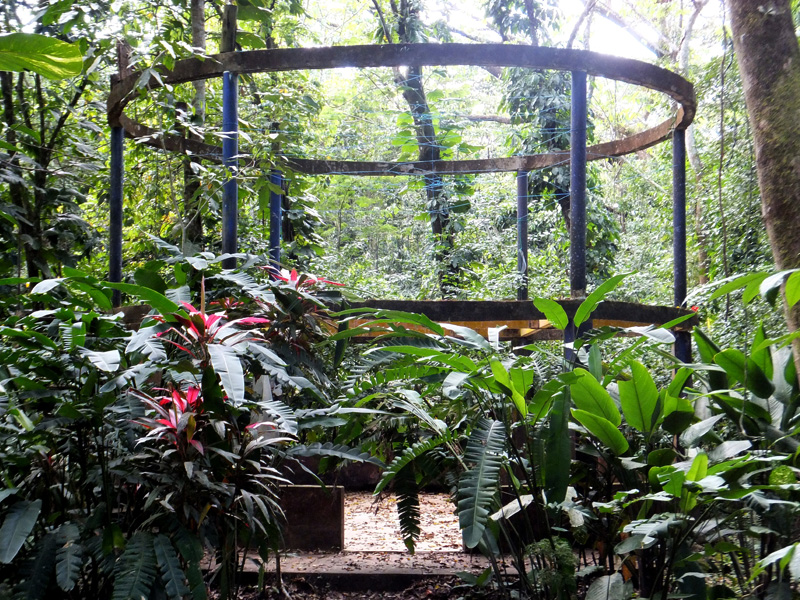
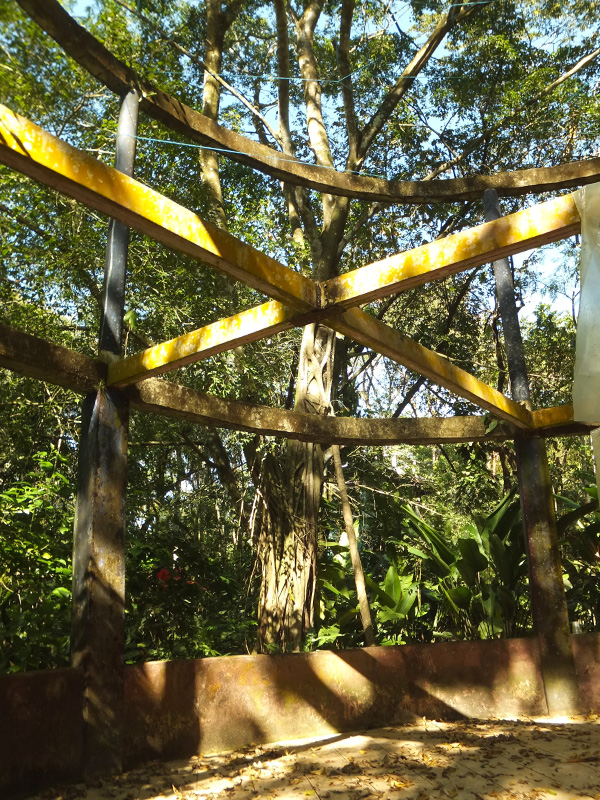
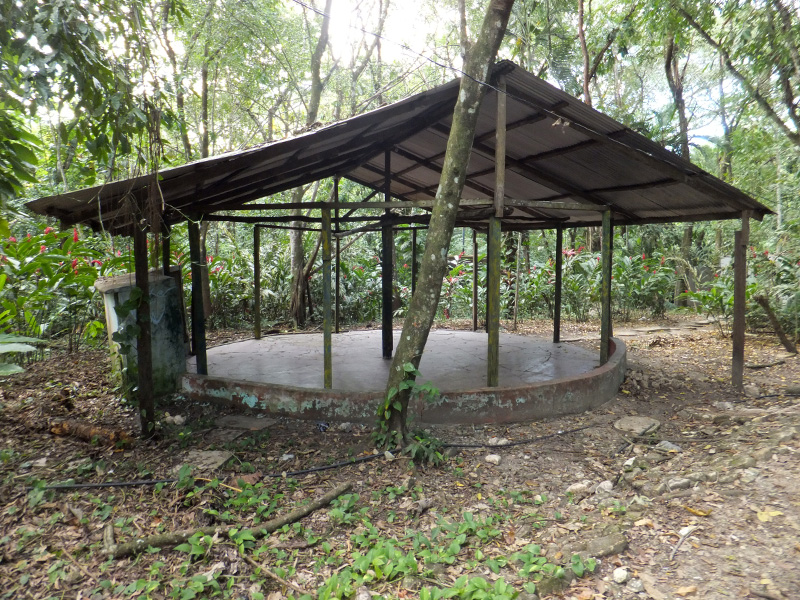
And then there is always a bit of color there you know, just right, like that little piece of red just sets off the whole thing so that there is no lack of color excitement.
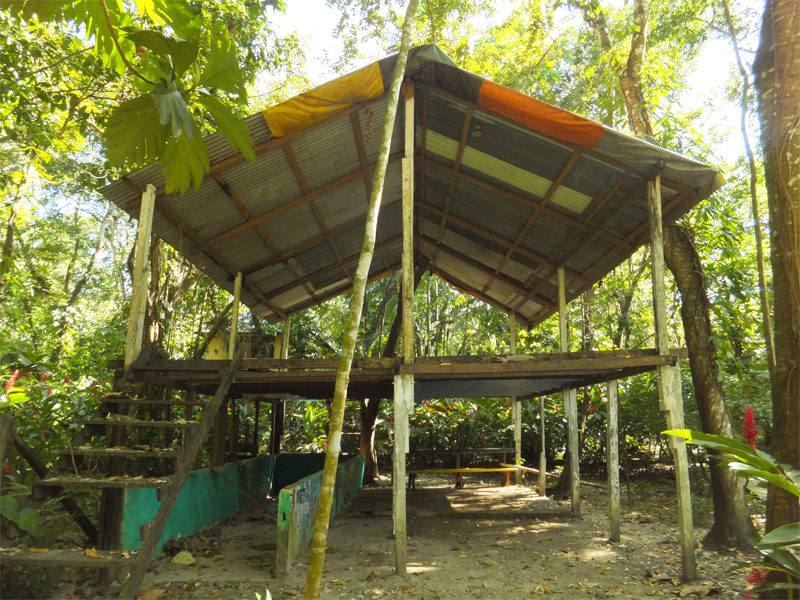
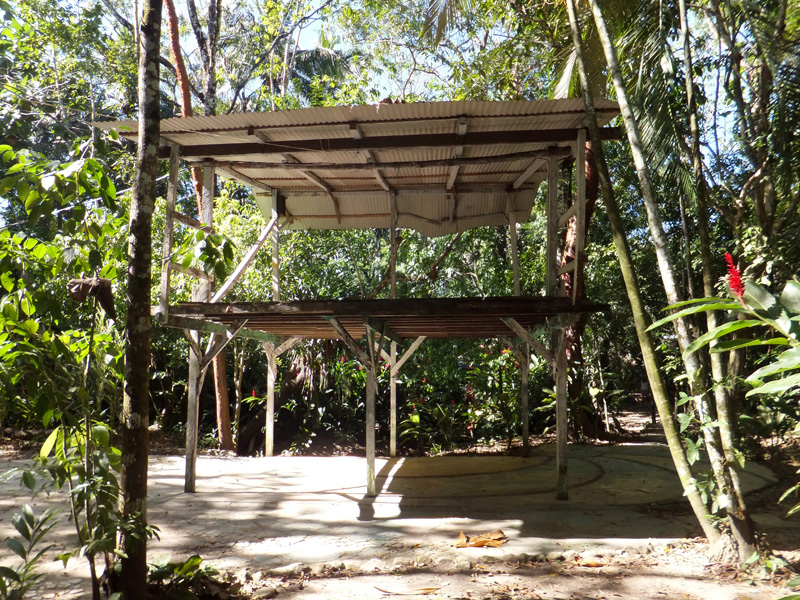
The simplicity and elegance of this structure with one roofed floor is striking. Seemingly it has no certain purpose and it is not in use of anything, but obviously someone keeps it clean from dirt and falling leafs. It has definitely a sculptural appeal, like many other things around there.
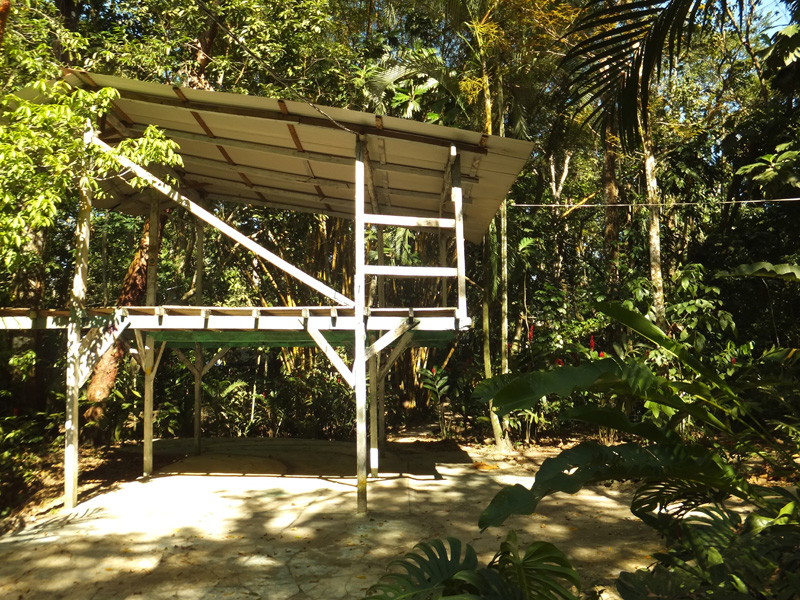
There you see where the stairs just completely fall away and you have these uninhabited old Hotel sections, and once again you get a better idea of the careful way that they don´t tear everything down all in one fell swoop. it´s done with a certain degree of sensitivity and grace so that there is time for the foliage to grow through the broken concrete, and there is time for the various colors on the wall to mellow under the sun. So you get this kind of really sensuous sense of something that is rooted very much into the earth. This kind of de-architecturization pervades the entire structure. And you have to remember that it´s a-centric, no focuses, nothing to grip on to, no certainty, everything is completely random and done to please somebody´s everyday activity.
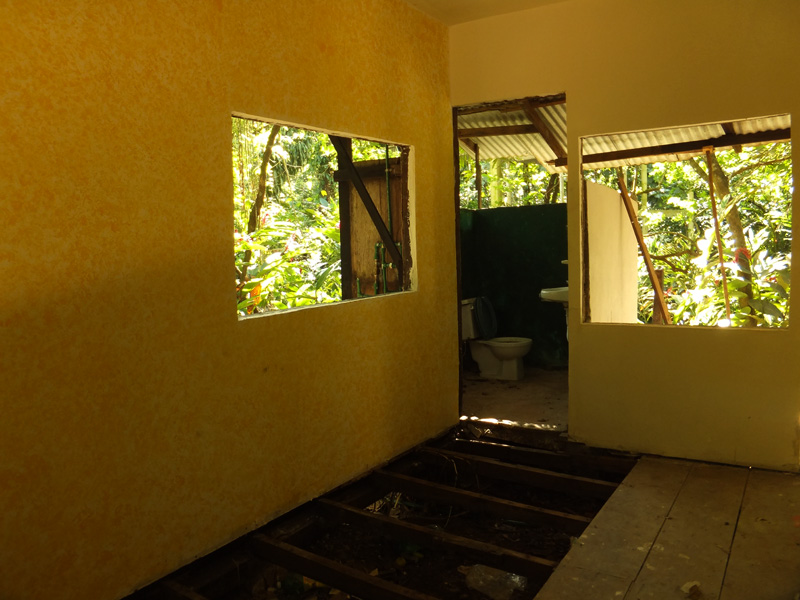
It´s not often, that you see buildings being both ripped down and built up at the same time. They really don´t know whether they want this part of the hotel or not, so it seems very smart to actually just leave it there.

A thought that came up on my frequent sociological talks with Mexico City cab drivers who kept asking me basic questions about European economy and politics, was, how the history of western productivity and infrastructure is rooted in the seasonal climate. The colder the winter, the more you have to plan ahead in the summer. Agriculture has to produce more than you can eat right away..whereas the nature of the tropics provides food and warmth continuously. The concept of work is simply less important here and the concept of economic growth continues to be rather a colonist one. Time and material are - to a large extend - still understood as a cyclical or wave-like process, both symbolized by the snake. Palenque actually used to be called the city of the snake. There were people there who worshiped the snake and, in a sense, this place is built in a kind of intertwining snaking way.
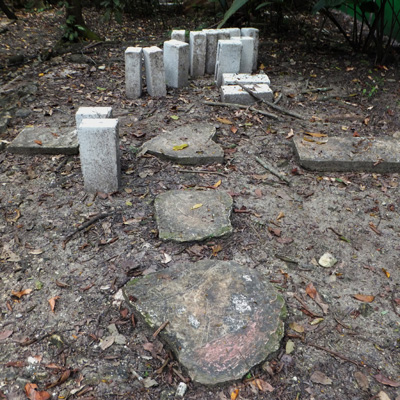
And so we too might surmise that the mortar of some unbuilt future is also the dust of an equally distant past, but in the end, and perhaps most satisfyingly, it is just a pile of cement-there to be dug for its cementness. It just happens to be there, and its boringness gives it a certain ambience, a certain frisson, a kind of meaning that it might not otherwise have.
And this looks like a threshold, but beyond there is nothing to step into, no door and no house. Anyhow it seems to lead towards something, but there is no point in trying to figure out what it is leading to. Towards a Stonehenge of four vertical bricks..?
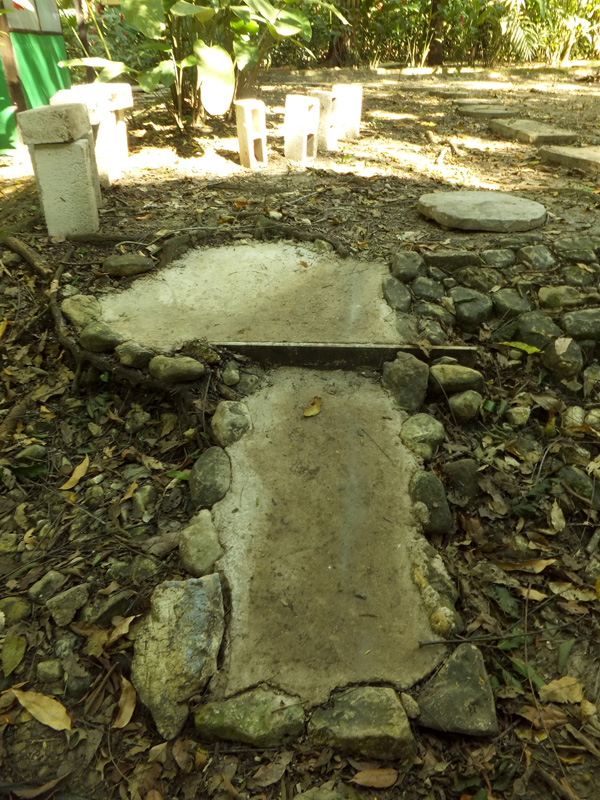
The logic of the whole place is just impossible to fathem. Here is not way that you can possibly figure it out..
Who had the idea for this floor painting?
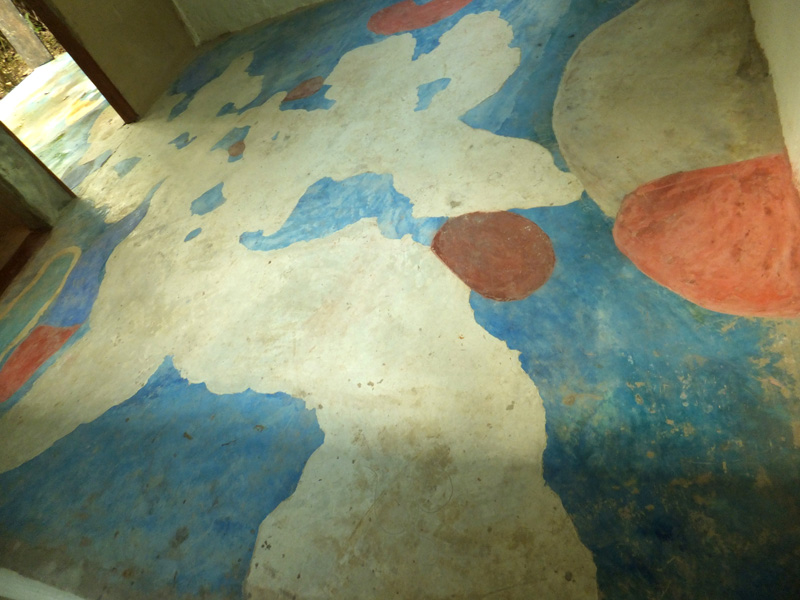
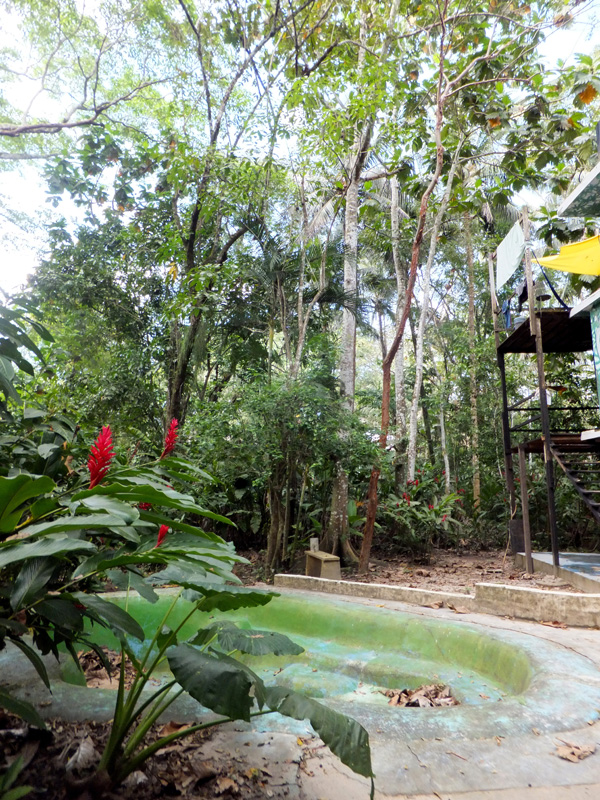
And what about all those empty dirty pools? Evidently they wanted a swimming pool at one time and they built this swimming pool but actually, when you come to a place like this nobody wants to swim. There is really no necessity for that; it sort of promises something but doesn´t deliver. Who knows on what fluid carried this person away who had left the clothes there.
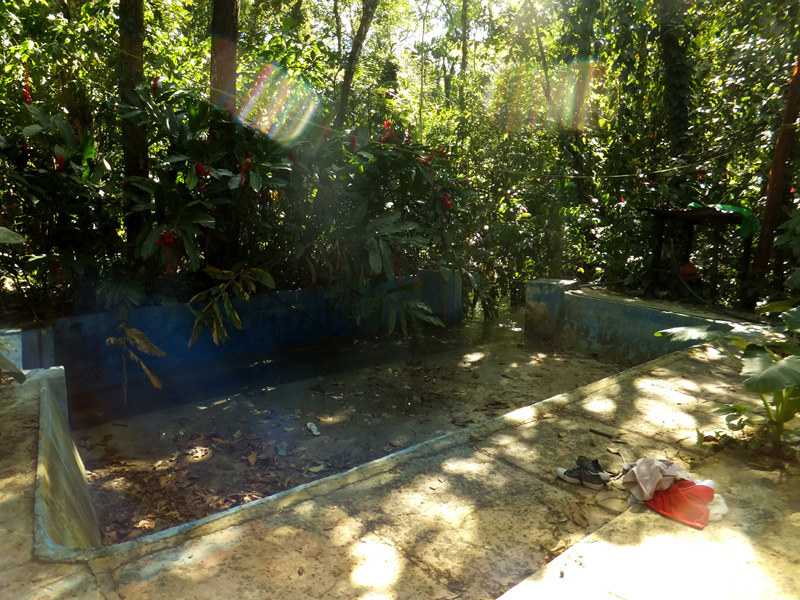
And this bridge between the second floors of two houses: What a brave and elegant construction although both its ends broke away, leaving it standing in the green, stripped bare of its function.
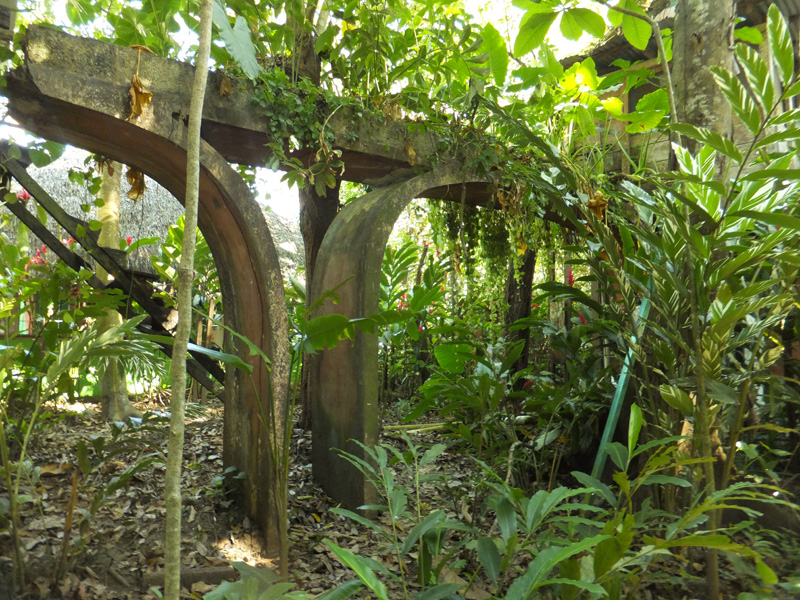
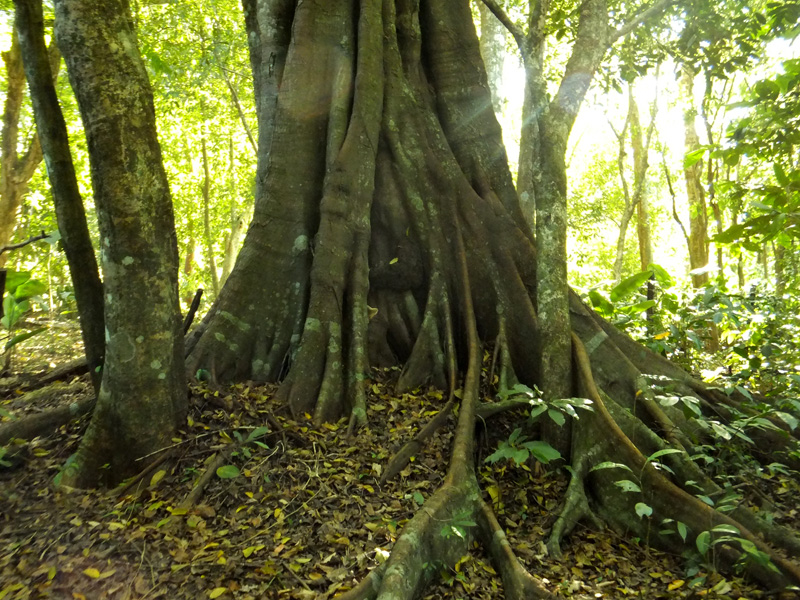
The architecture is as vegetal as the plants are architectural.
It seems like subject and object relations are not only blurred here, but reversed:
In this garden it is the jungle who is the gardener.
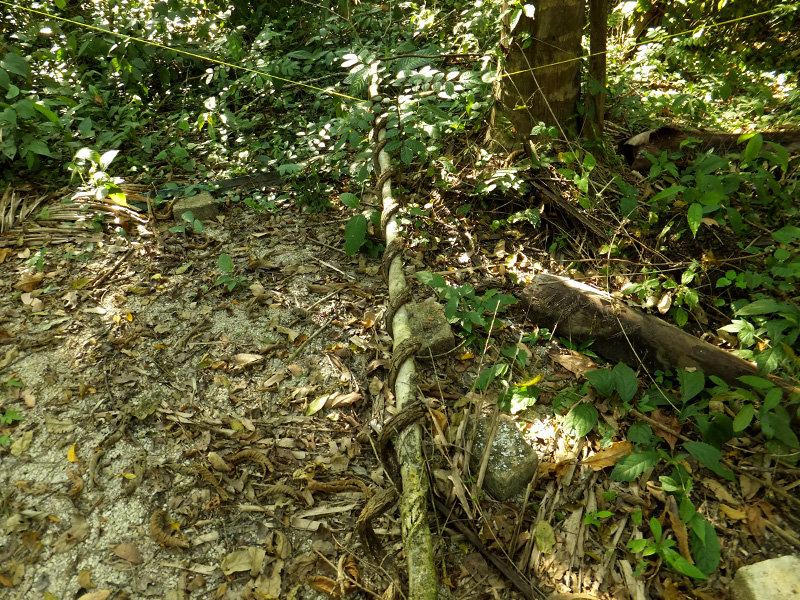
On one of my walks through the forest, I suddenly remembered something about Robert Smithson and Palenque. I took the next car into town to google it, and there it pops up:
HOTEL PALENQUE by Robert Smithson...
Smithson came to Palenque in 1969 with Nancy Holt and an art dealer friend to mingle on the paths of the old mayan gods and found them more vividly incorporated in the hotel he was staying in, than in the ancient archeological mayan site. His 1973 presentation at the architectural faculty of the University of Utah became iconic: "More stoned than stentorian in form, delivery and content, it appeared navigationally errant and subject to drift. Cheating gravity, Smithson gently mocked the flat-earth school of exegesis. The architectural mass of the ancient Mayan ruins for which Palenque is famous was all but ignored: its pull just another weak signal from a past already muffled by the alluvion of time. Instead we are led into back-waters and fringe areas; the emptied pool, evacuated dancehall and meaningless passage that together made up the Hotel Palenque", as put by Neville Wakefield in Parkett 43. (Smithsons original presentation can be seen on ubuweb)
Once again I had found myself in the footsteps of Smithson. That already had happened twice in my practice. Sigh! I left the shabby internet cafe and walked 5 minutes towards the main plaza of Palenque, there it was: HOTEL PALENQUE with its legendary never-ending construction perfectly on display:
I shot a little video of the guy who was just painting over the hotel sign in this very moment.
https://www.youtube.com/watch?v=hli3m7EIEus&feature=youtu.be
Italicized parts are quotes from Robert Smithsons original speech, everything else by Ulrike Buck
(Hotel Palenque 1969 by Robert Smithson)
